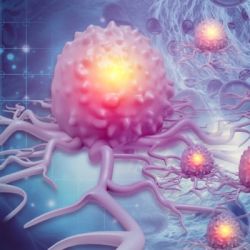A recent study published in the Journal of the National Cancer Institute found that living in an area with high levels of particulate air pollution was associated with an increased incidence of breast cancer.
The research was conducted by scientists at the National Institute of Environmental Health Sciences (NIEHS) and the National Cancer Institute (NCI), both part of NIH.
The most significant rises in breast cancer incidence occurred among women who, on average, lived in areas with higher particulate matter levels (PM2.5) in close proximity to their homes prior to their enrollment in the study. This contrasted those who lived in areas with lower levels of PM2.5.
Unfortunately, the particulate matter pollution assessed in this study had a diameter of 2.5 microns in diameter or smaller (PM2.5), meaning these particles are tiny enough to be inhaled deep into the lungs.
The study revealed an 8% rise in breast cancer incidence among individuals residing in regions with higher exposure to PM2.5. While this increase may appear relatively modest, these findings hold significant importance, as air pollution is a widespread exposure that affects nearly everyone.
This study was conducted using data from the NIH-AARP Diet and Health Study, which included over 500,000 men and women enrolled between 1995-96 across six states (California, Florida, Pennsylvania, New Jersey, North Carolina, and Louisiana) and two metropolitan areas (Atlanta and Detroit). The average age of the female participants in this cohort was around 62 years, with the majority identifying as non-Hispanic white. Over the course of approximately 20 years of follow-up, a total of 15,870 cases of breast cancer were identified.
Rena Jones, Ph.D., senior author and principal investigator of the study at NCI, said, “it can take many years for breast cancer to develop and, in the past, air pollution levels tended to be higher, which may make previous exposure levels particularly relevant for cancer development”.
To examine how the association between air pollution and breast cancer might differ depending on the type of tumor, the researchers conducted separate evaluations for estrogen receptor-positive (ER+) and estrogen receptor-negative (ER-) tumors. They found that PM2.5 was associated with a higher incidence of ER+ breast cancer, but not ER-, tumors. This suggests that PM2.5 could potentially affect breast cancer development through an underlying biological mechanism related to endocrine disruption.
As the research was limited in exploring the differences in the relationship between air pollution and breast cancer across different study areas, future research should explore how the regional differences in air pollution could have an effect on the incidence of breast cancer in women.
Source: National Institutes of Health
Image Credit: iStock






















